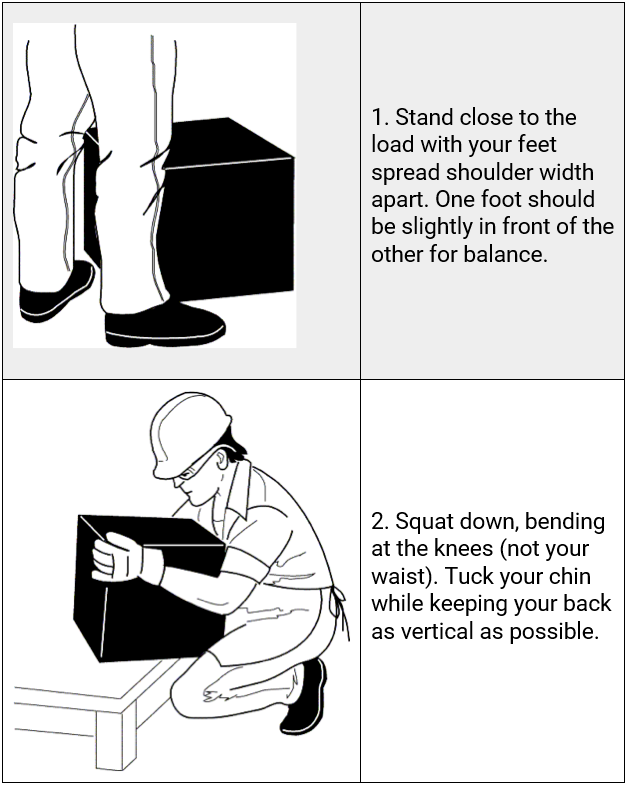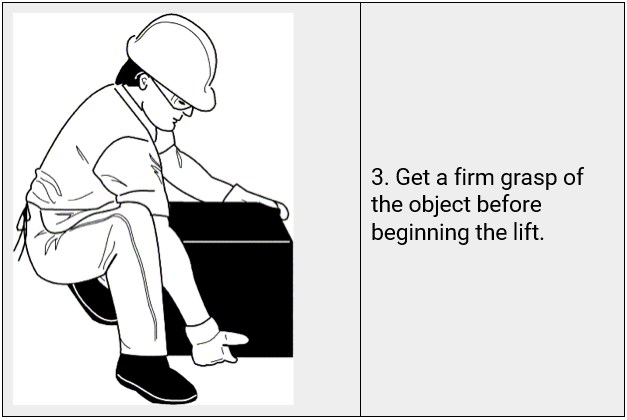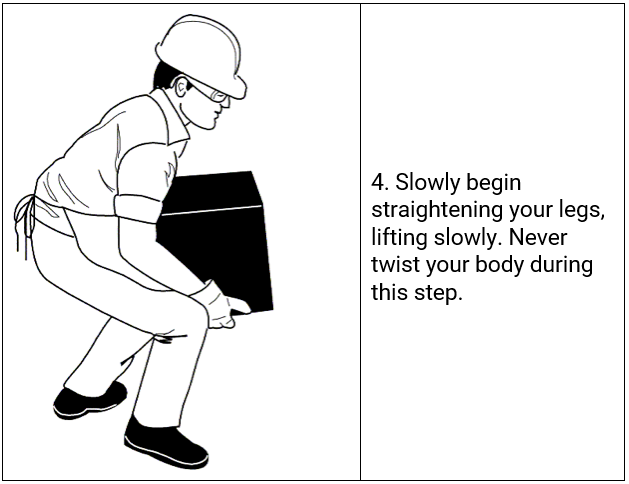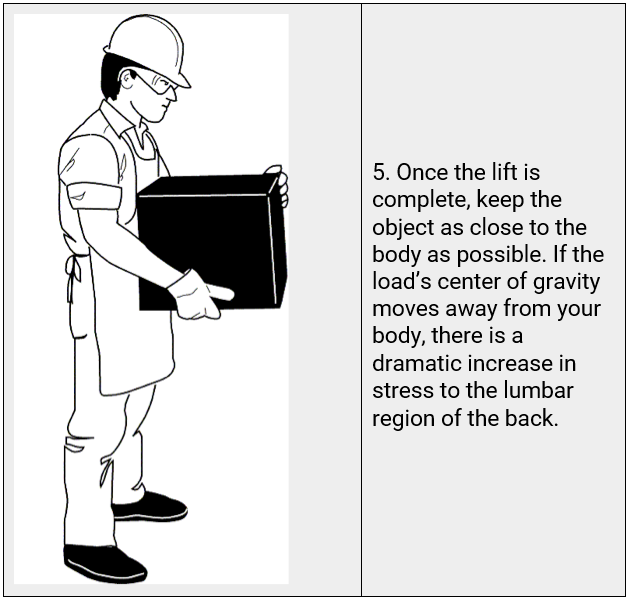Proper Lifting Techniques – Quick Tips
According to the 2018 Liberty Mutual Workplace Safety Index, injuries related to overexertion (lifting, pushing, pulling, holding, carrying or throwing) were the leading cause of workplace injuries accounting for more than 20 percent of all injuries and costing businesses more than $13.6 billion. This Index analyzes events which caused employees to miss six or more days of work and is based on data three years prior. The 2018 Index reflects 2015 data.
The Bureau of Labor Statistics (BLS) reported 882,730 nonfatal occupational injuries and illnesses in 2017 that resulted in days away from work in private industry. The number of cases involving overexertion when lifting or lowering numbered 97,990 with 48,550 attributed to back injuries.
Preventing back injuries can be a major challenge for employers. Although no approach has completely eliminated back injuries, a substantial portion could be minimized by incorporating an effective control program along with an ergonomics analysis and design of work tasks.
The Occupational Safety and Health Administration (OSHA) has evaluated ways to help prevent lifting injuries. It specifies two types of controls: engineering and administrative. Engineering controls are used to redesign the workstation to minimize lifting hazards. Administrative controls include carefully selecting and training workers so that they can perform their jobs safely.
OSHA suggested engineering controls implement physical change to the workplace, which eliminates/reduces the hazard on the job/task. Examples include:
- Use of a device to lift and reposition heavy objects to limit force exertion.
- Reducing the weight of a load to limit force exertion.
- Repositioning a work table to eliminate a long/excessive reach and enable working in neutral postures.
- Using diverging conveyors off a main line so that tasks are less repetitive.
- Installing diverters on conveyors to direct materials toward the worker to eliminate excessive leaning or reaching.
- Redesigning tools to enable neutral postures.
OSHA suggested administrative controls establish efficient processes or procedures. Examples include:
- Requiring that heavy loads are only lifted by two people to limit force exertion.
- Establishing systems so workers are rotated away from tasks to minimize the duration of continual exertion, repetitive motions, and awkward postures. Design a job rotation system in which employees rotate between jobs that use different muscle groups
- Staffing “floaters” to provide periodic breaks between scheduled breaks
- Properly using and maintain pneumatic and power tools
Before lifting, take a moment to think about what you are about to do. Examine the object for sharp corners, slippery spots or other potential hazards. Know your limit and do not try to exceed it. Ask for help if needed. Or if possible, divide the load to make it lighter. Know where you are going to set the item down and make sure the destination and your path are free of obstructions. Then follow these steps.




If you must turn while carrying the load, turn using your feet, not your torso. To place the object below the level of your waist, follow the same procedures in reverse order. Remember to keep your back as vertical as possible, and bend at the knees.
To evaluate a worker’s lifting habits, consider the following variables: frequency of lifting, duration of such activities and type of lifting, as well as the worker’s state of health, body size, age and general physical fitness. To help in the evaluation process, consider using the Applications Manual for the Revised NIOSH Lifting Equation, which gives an equation that you can use to factor all of these variables.
Conclusion
Using proper lifting techniques can help prevent downtime due to avoidable back injuries. With a little practice, precautionary methods such as these can become good daily habits that could help prevent back injuries both on and off the job. Remember, no approach will completely eliminate back injuries. However, a substantial portion can be prevented by incorporating effective administrative and engineering controls.
Although OSHA does not have a specific standard which sets limits on how much a person may lift or carry, exposure to hazards related to heavy lifting and back injuries may be addressed under Section 5(a)(1) of the Occupational Safety and Health (OSH) Act, commonly referred to as the General Duty Clause. It states “Each employer — shall furnish to each of his employees employment and a place of employment which are free from recognized hazards that are causing or are likely to cause death or serious physical harm to his employees . . .”
Commonly Asked Questions
When carrying a load, is it okay to turn or twist my body as long as I turn with my torso?
No. You should try to minimize any turning or twisting, but if you must turn while carrying the load, turn using your feet.
Are there any guidelines I can follow to help assess multi-task lifting jobs?
Yes. To help in the evaluation process, refer to the Applications Manual for the Revised NIOSH Lifting Equation.
Will wearing a back support belt increase my maximum lifting potential?
No. Manufacturers of back support belts do not claim they increase maximum lifting potential.
Sources
2018 Liberty Mutual Workplace Safety Index
Applications Manual for the Revised NIOSH Lifting Equation
Back Injuries – Nation’s #1 Workplace Safety Problem
Ergonomic Guidelines for Manual Material Handling
OSHA Safety and Health Topics / Ergonomics
The information contained in this article is intended for general information purposes only and is based on information available as of the initial date of publication. No representation is made that the information or references are complete or remain current. This article is not a substitute for review of current applicable government regulations, industry standards, or other standards specific to your business and/or activities and should not be construed as legal advice or opinion. Readers with specific questions should refer to the applicable standards or consult with an attorney.
Source: Grainger Know How – https://www.grainger.com/know-how